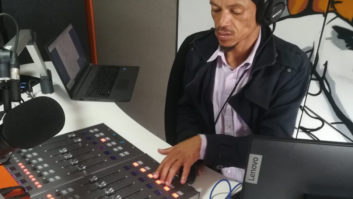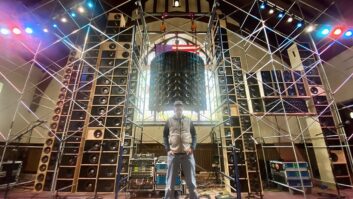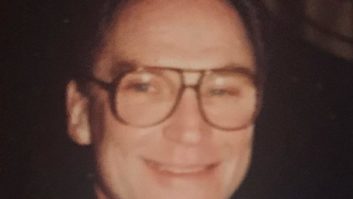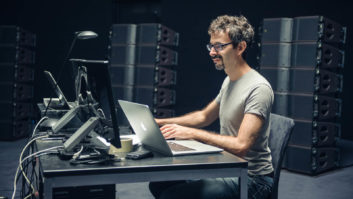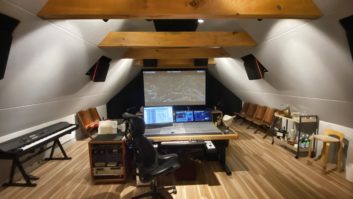We’ve been talking about “community” a lot lately here at Mix. We’ve been planning for coming changes on our Website, with new functionalities, better search, more services, user-generated content — all the stuff you would expect when Web and media types get together in 2009. It’s not the same discussion it was even 10 years ago, when the word “community” was thrown around by marketing types who weren’t really sure who their customer was and thought they might as well cast a wide net. Today we know who our Mix audience is, and it’s not all that different from our readership of 32 years ago. Categories have come and gone (remember cassette duplication?), studios have opened and closed, and technologies have boomed and fizzled. But it’s still, at its core, the professional audio community. Folks who love sound.
There are studio owners, producers, engineers, assistants, studio managers, artist managers, maintenance techs, runners and interns. There are front-of-house and monitor engineers, remote recording engineers, broadcast mixers, field recordists, guitar techs, programmers, riggers and A2s. There are re-recording mixers, sound effects editors, Foley artists, music supervisors — for film, TV, games and the Web. There are mastering engineers, studio designers, contractors, publishers, retailers, manufacturers, educators and students of all stripes. And they are all at AES.
The AES convention is the physical manifestation of our pro audio community, same as NAB for broadcasters or GDC for gamers. The paper sessions are not all that different from a Webinar series; the halls are packed with people you might find in a forum (you’ll find Fletcher at the center of both!), and the booths themselves become sites and newsletters and e-blasts, with engineers and producers searching and browsing, hearing of hot items virally, and spreading the word at nighttime receptions or in the back of a cab.
Don’t get me wrong; I’m no media curmudgeon. The accelerated pace of Internet development has changed the way we send and receive information. It’s opened up worlds of possibilities for creative collaboration and extended reach and scale, in both production and distribution. At the same time, it has increased the pressure to reach more people, sell more units, book more time. At less cost and with fewer people. But that’s basic business. While the medium of information exchange is forever altered, there’s truth in the old chestnut that the more things change, the more they stay the same.
There’s real value in rubbing shoulders with your peers. It’s just as true inside the studio, in the midst of a project, as it is on the convention floor. For every artist Tweet or Facebook update, there’s a new job being offered over a drink at a convention hotel, or an old friend stopping by the booth. The ability to connect on the Internet will drive the engine of growth in our small piece of the high-tech/highly creative world, no doubt about it. But we must remember that the strength and value of any community is in the people who eat, sleep and breathe the culture. And you’ll find the real core at the Javits Center this month.
See you there,
P.S. A special farewell to our former group publisher Joanne Zola, my colleague and friend these past 18 years at Mix. She understands community building in all of its forms, which we might attribute to the hundreds of Dead and Phish shows she attended. She will be missed personally and professionally, and we all wish her well.

